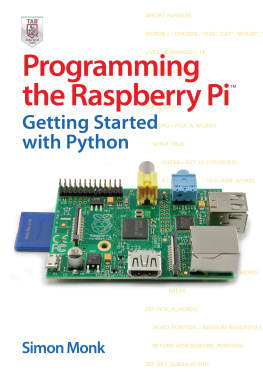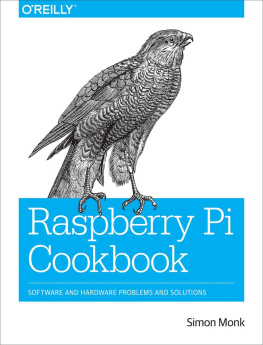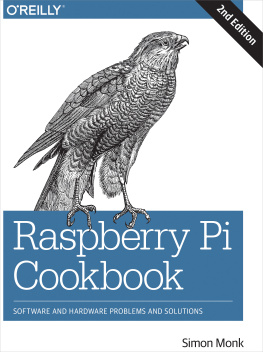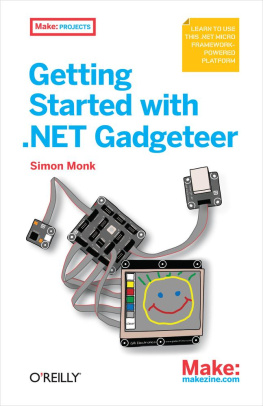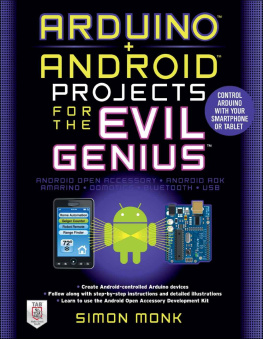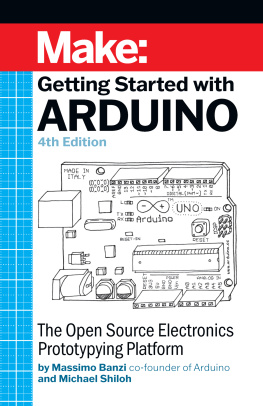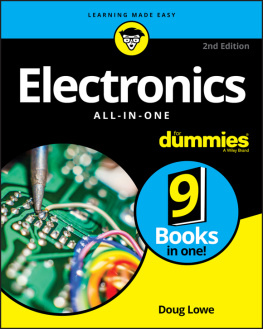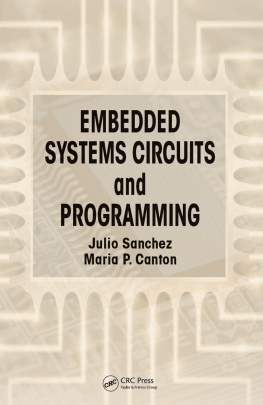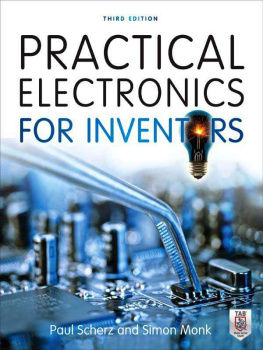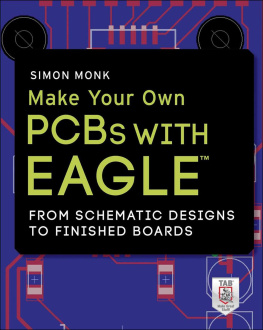Copyright 2016 by McGraw-Hill Education. All rights reserved. Except as permitted under the United States Copyright Act of 1976, no part of this publication may be reproduced or distributed in any form or by any means, or stored in a database or retrieval system, without the prior written permission of the publisher.
ISBN: 978-0-07-184464-2
MHID: 0-07-184464-3
The material in this eBook also appears in the print version of this title: ISBN: 978-0-07-184463-5, MHID: 0-07-184463-5.
eBook conversion by codeMantra
Version 1.0
All trademarks are trademarks of their respective owners. Rather than put a trademark symbol after every occurrence of a trademarked name, we use names in an editorial fashion only, and to the benefit of the trademark owner, with no intention of infringement of the trademark. Where such designations appear in this book, they have been printed with initial caps.
McGraw-Hill Education eBooks are available at special quantity discounts to use as premiums and sales promotions or for use in corporate training programs. To contact a representative, please visit the Contact Us page at www.mhprofessional.com.
McGraw-Hill Education, the McGraw-Hill Education logo, TAB, and related trade dress are trademarks or registered trademarks of McGraw-Hill Education and/or its affiliates in the United States and other countries and may not be used without written permission. All other trademarks are the property of their respective owners. McGraw-Hill Education is not associated with any product or vendor mentioned in this book.
Information contained in this work has been obtained by McGraw-Hill Education from sources believed to be reliable. However, neither McGraw-Hill Education nor its authors guarantee the accuracy or completeness of any information published herein, and neither McGraw-Hill Education nor its authors shall be responsible for any errors, omissions, or damages arising out of use of this information. This work is published with the understanding that McGraw-Hill Education and its authors are supplying information but are not attempting to render engineering or other professional services. If such services are required, the assistance of an appropriate professional should be sought.
TERMS OF USE
This is a copyrighted work and McGraw-Hill Education and its licensors reserve all rights in and to the work. Use of this work is subject to these terms. Except as permitted under the Copyright Act of 1976 and the right to store and retrieve one copy of the work, you may not decompile, disassemble, reverse engineer, reproduce, modify, create derivative works based upon, transmit, distribute, disseminate, sell, publish or sublicense the work or any part of it without McGraw-Hill Educations prior consent. You may use the work for your own noncommercial and personal use; any other use of the work is strictly prohibited. Your right to use the work may be terminated if you fail to comply with these terms.
THE WORK IS PROVIDED AS IS. McGRAW-HILL EDUCATION AND ITS LICENSORS MAKE NO GUARANTEES OR WARRANTIES AS TO THE ACCURACY, ADEQUACY OR COMPLETENESS OF OR RESULTS TO BE OBTAINED FROM USING THE WORK, INCLUDING ANY INFORMATION THAT CAN BE ACCESSED THROUGH THE WORK VIA HYPERLINK OR OTHERWISE, AND EXPRESSLY DISCLAIM ANY WARRANTY, EXPRESS OR IMPLIED, INCLUDING BUT NOT LIMITED TO IMPLIED WARRANTIES OF MERCHANTABILITY OR FITNESS FOR A PARTICULAR PURPOSE. McGraw-Hill Education and its licensors do not warrant or guarantee that the functions contained in the work will meet your requirements or that its operation will be uninterrupted or error free. Neither McGraw-Hill Education nor its licensors shall be liable to you or anyone else for any inaccuracy, error or omission, regardless of cause, in the work or for any damages resulting therefrom. McGraw-Hill Education has no responsibility for the content of any information accessed through the work. Under no circumstances shall McGraw-Hill Education and/or its licensors be liable for any indirect, incidental, special, punitive, consequential or similar damages that result from the use of or inability to use the work, even if any of them has been advised of the possibility of such damages. This limitation of liability shall apply to any claim or cause whatsoever whether such claim or cause arises in contract, tort or otherwise.
To Matthew,
from a very proud Dad.
About the Author
Dr. Simon Monk (Preston, UK) has a degree in cybernetics and computer science and a Ph.D. in software engineering. He spent several years as an academic before he returned to industry, co-founding the mobile software company, Momote Ltd. He has been an active electronics hobbyist since his early teens and is a full-time writer on hobby electronics and open-source hardware. Dr. Monk is the author of numerous electronics books, specializing in open-source hardware platforms, especially Arduino and Raspberry Pi. He is also co-author with Paul Scherz of Practical Electronics for Inventors, Third Edition.
You can follow him on Twitter, where he is @simonmonk2.
Contents
Acknowledgments
M any thanks to all those at McGraw-Hill who have done such a great job in producing this book. In particular, thanks to my editors Roger Stewart and Michael McCabe, and to Patty Wallenburg.
I am most grateful to Andr Knrig for his technical review of the material.
And, last but not least, thanks once again to Linda, for her patience and generosity in giving me space to do this.
CHAPTER
Introduction to Fritzing
F or many makers and electronics hobbyists, the idea of using computer-aided design (CAD) software conjures up images of obscure and difficult-to-use programs that might need a weeks training course before you can do anything useful with them. Fritzing is not like that. Fritzing has been designed and has developed for makers, hobbyists, and inventors, not for professional electronic engineers.
This high-speed tour of Fritzing will give you an idea of the breadth of this tool. It is useful just to know what features are available, even if you are not going to use them right away. Many of the things mentioned in the following short summary will be dealt with in considerably greater detail later in the book, so please dont feel cheated.
Fritzing
Fritzing is so easy to use that many people use it to sketch out breadboard layouts or draw schematic diagrams, as this can be accomplished almost as easily as with pen and paper. This ease of use does not mean that Fritzing is only of use for simple example projects. It is perfectly possible to design quite complex projects with Fritzing, without having to compromise on the design. The key advantages of Fritzing over other CAD tools are as follows:
It is free to use (although a donation is appreciated).
It is simple and intuitive.
Fritzing includes many libraries of components from popular suppliers such as Adafruit, Sparkfun, and Snootlabs.
It is suitable for Arduino, Raspberry Pi, Beaglebone, and Spark Core projects.
Fritzing is an integrated printed circuit board (PCB) production service. Or export the files and use another service.
shows one of the example projects supplied with Fritzing.

FIGURE 1-1 A Fritzing example project (Breadboard view).
The first thing that may come as a surprise, if you have used other CAD systems, is that the first view of the project is a Breadboard view. Fritzing assumes that you will want to make a prototype of your project on solderless breadboard to get all the wrinkles out of it before you move on to making a PCB. Most CAD systems completely ignore the concept of prototyping on breadboard, but in Fritzing, it is a fundamental part of the design process.


